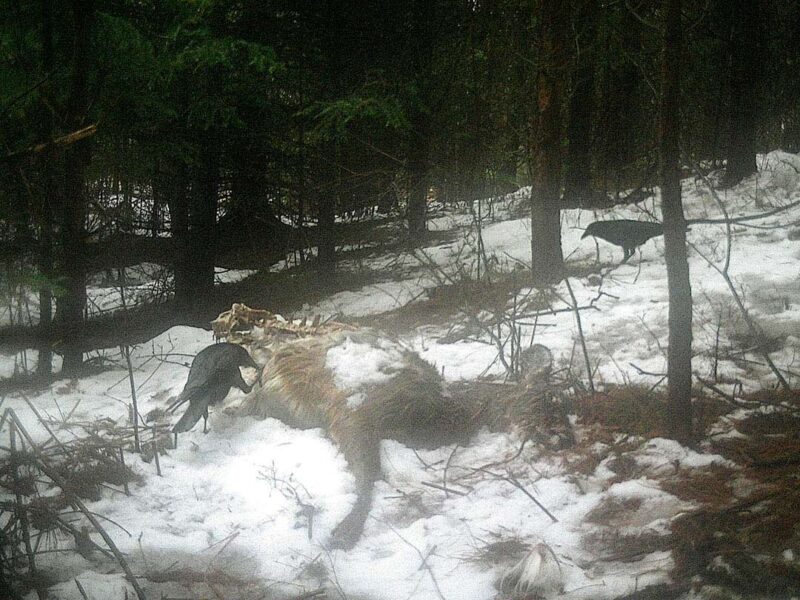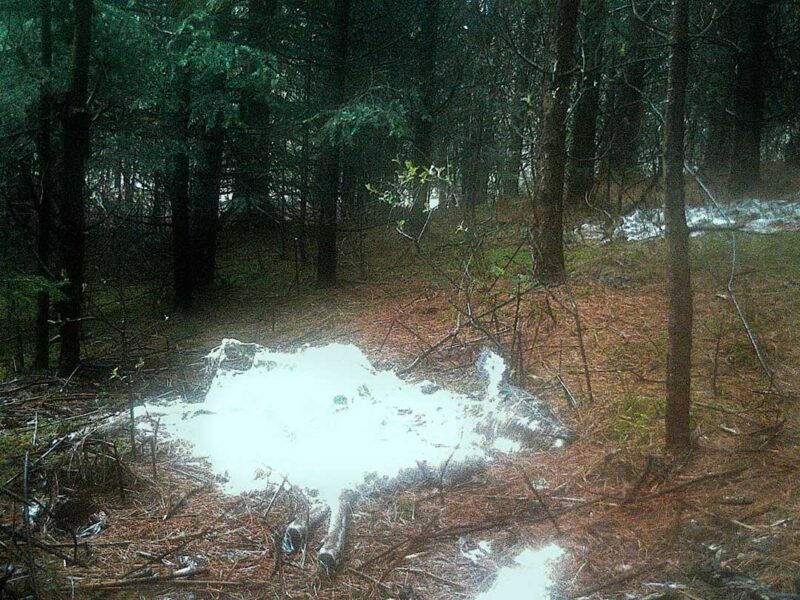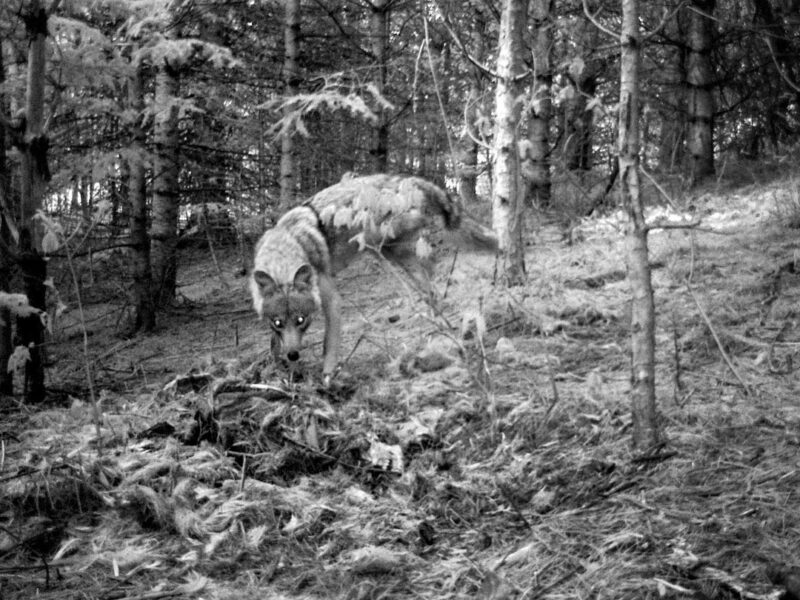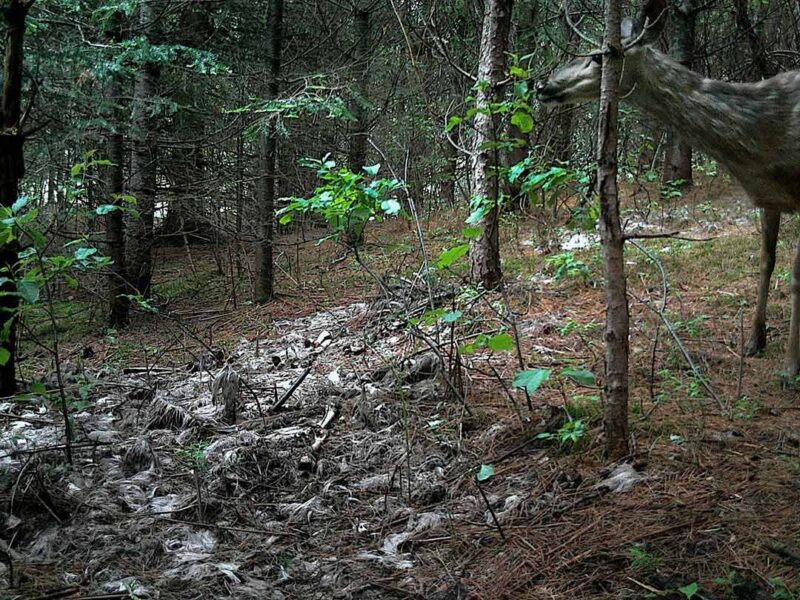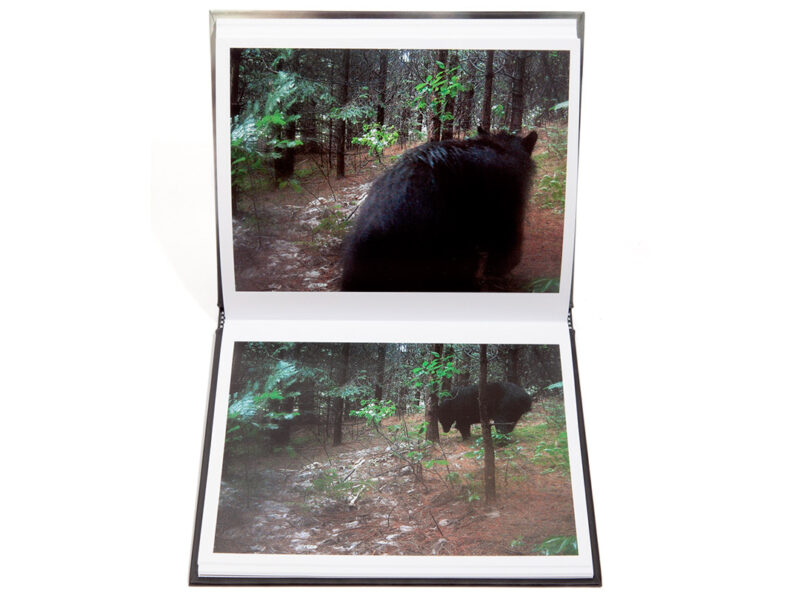[March 21, 2023]
By Sophie Bertrand
A few weeks ago, during a Sunday stroll in a park in the Lanaudière region, my eye was drawn to a large lump lying not far from the path I was on. The animal’s corpse, just a few metres away, literally blended in with the winter landscape, like a rock, between the entangled trunks and trees humbly withstanding the passage of the seasons. The red spots sprinkled on the powdery snow confirmed that the assault was recent. After briefly speculating on what was responsible for the attack, I left the fresh remains of the deer undisturbed, as it was now an offering to nature. My experience was similar to that recorded in Normand Rajotte’s images.
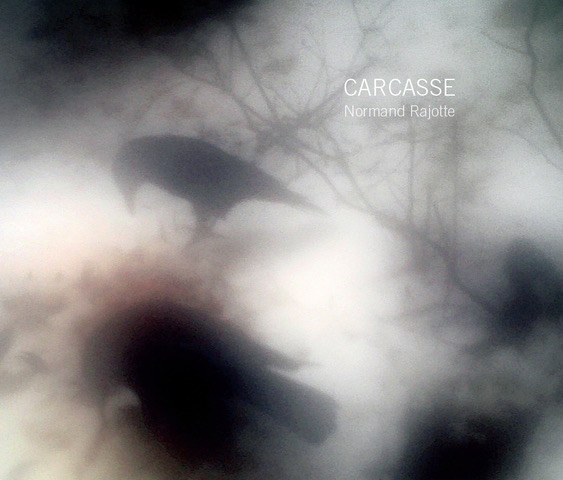
Normand Rajotte, Carcasse, Montreuil-sur-Brèche, Diaphane éditions, New Richmond, éditions Escuminac, 2022, 136 pp., 43 colour and 35 black-and-white photographs
In his most recent book, Carcasse, Rajotte unveils the forest’s secrets regarding life after death – or, rather, death after life. He focuses on the post-mortem ritual once an animal’s corpse has been abandoned by a hungry predator. The book contains a long sequence of about eighty colour and black-and-white (infrared) photographs. Many of the images have the same point of view and framing, with a few slight variations. The scene presents the cadaver of an animal lying in the middle of the woods. At first, while it is covered by a shroud of snow, we can pick out only its silhouette. Then, gradually, as the snow melts, we can identify it: a white-tailed deer, the victim of a fatal encounter with a coyote, as Rajotte informs us in his epilogue. Then, a procession of animals – among them deer, coyotes, black bears, and wolves – and carrion birds – large crows and other birds of prey – show up at the funerary festivities, popping up in the frame, both day and night. Preferring to be off-screen or indifferent to the programmed focus, some seem interested in the carcass whereas others go their own way, including snowshoe hares, regular visitors to the site who parade past the camera as they undergo their seasonal moults. Although Rajotte himself appears occasionally in an image, he prefers to be in the background as the shots are taken: thus, in his own way, he scrutinizes what goes on behind the scenes in this forest that he knows so well, as well as the usually discreet circulation of fauna day and night, that only permanently installed surveillance cameras can capture.
To carry out this project, Rajotte “kept watch” for eleven months in the woods near his home. Two camouflaged hunting cameras acted as peepholes and as tools for observation of the animal cycle.1 Once the adjustments were made, he went away to let nature do its work. Although the book’s unequivocal title highlights the process of organic decomposition from corpse to skeleton, it is much more than a simple scientific study. Based on the photographic sequencing, the repeated visits around the remains are reminiscent of a wake. In turn, the corpse is a meeting place, a temporal reference point, and a vestige; finally, it disappears entirely, leaving only a memory. In the end, nature, as is its wont, restores its order to the space wiped clean of the last bits of bone.
For more than twenty years, Rajotte, who lives in Montreal, has had a second residence in the Mont-Mégantic region of Quebec, where this narrative was produced. Today, his photographic practice is turned mainly toward an inventory of his evolving relationship with this bit of forest, his terrain for inspiration and introspection and his creative material. It is here that most of his corpus is shaped, even though he is occasionally unfaithful to it, leaving for a few weeks when invited to go and explore other landscapes. Always aware of the non-exhaustiveness of the representation process, he tries in each of his series to convey, through the deep and lasting connection that he maintains with this nearby space, the different visual languages that his subject offers him. In this narrative offering, he has deliberately chosen not to be present to document reality but to capture it in absentia in order not to interfere with the rituals of his beloved territory and allowing it to reveal some of its secrets.
Carcasse was presented in 2018 as an in situ installation in Mouvement Essarts’ sculpture park in Saint-Pie-de-Guire, Quebec. The small-format book offers an intimate alternative and a reading experience both cinematographic and flip-book-like, without actually animating the subject. Translated by Käthe Roth
Photographer, critic, and independent curator Sophie Bertrand has been a regular contributor to Ciel variable since 2018. Her essays have also been published in Photosolution, Esse, Ricochet, and L’Œil de la photographie, as well as in the book Une histoire des femmes photographes. She holds a master’s degree in museology from the Université du Québec à Montréal, and her research areas include contemporary and documentary photography, heritage, and photographic collections.



